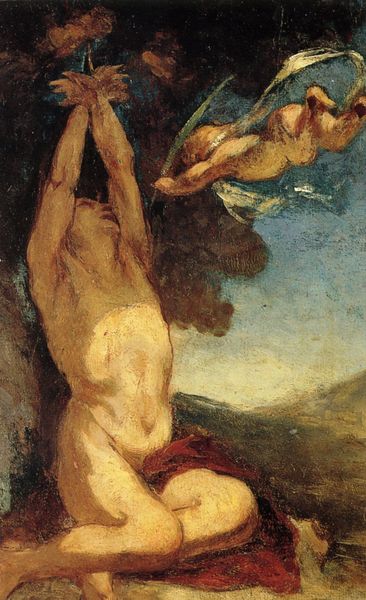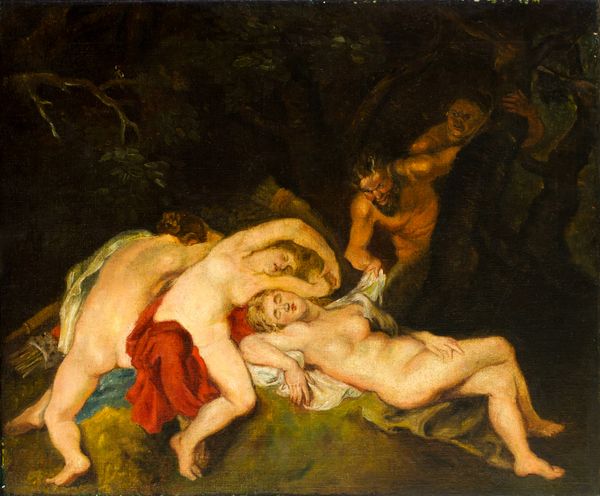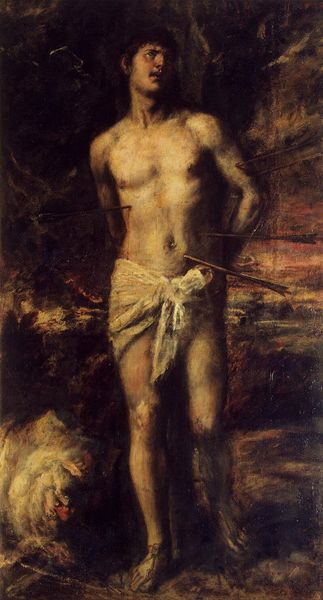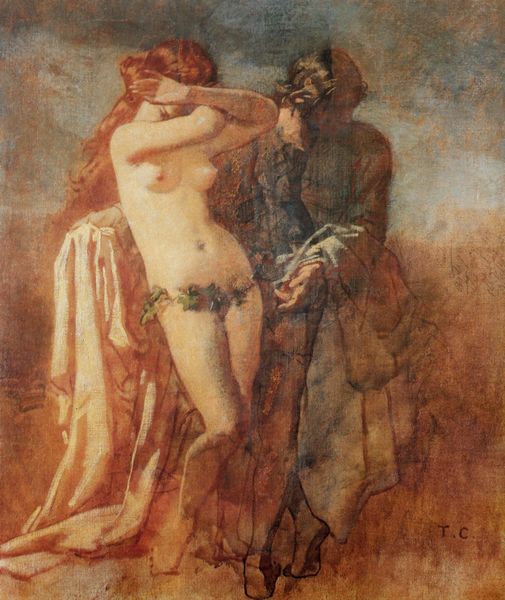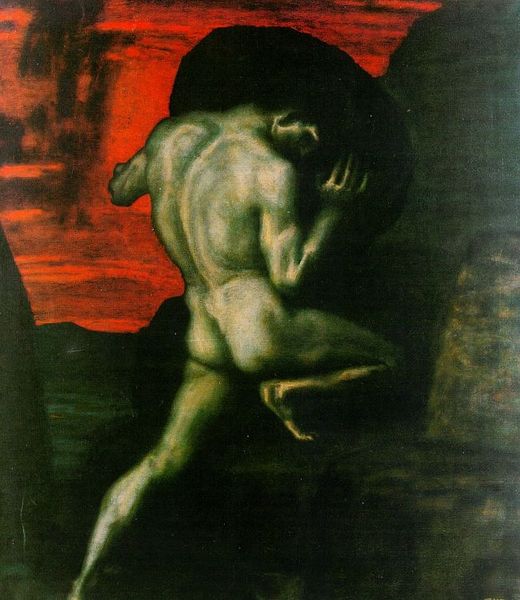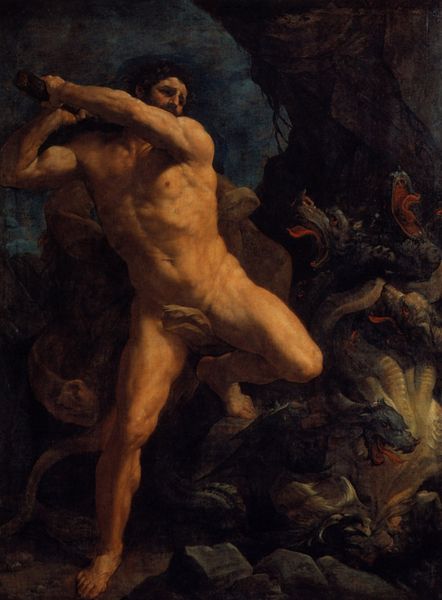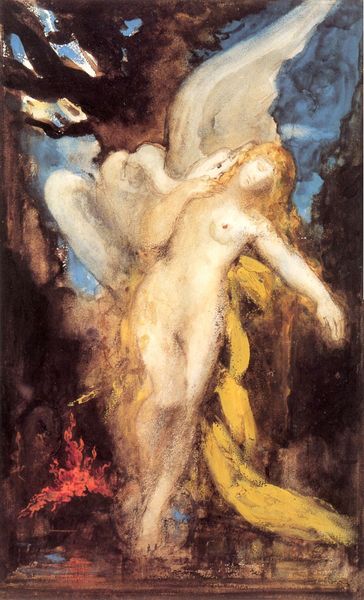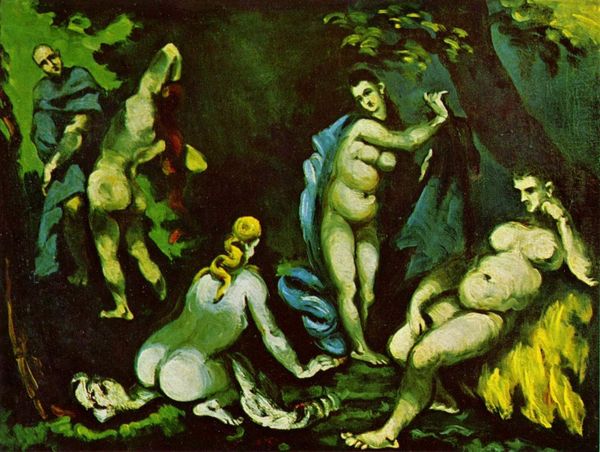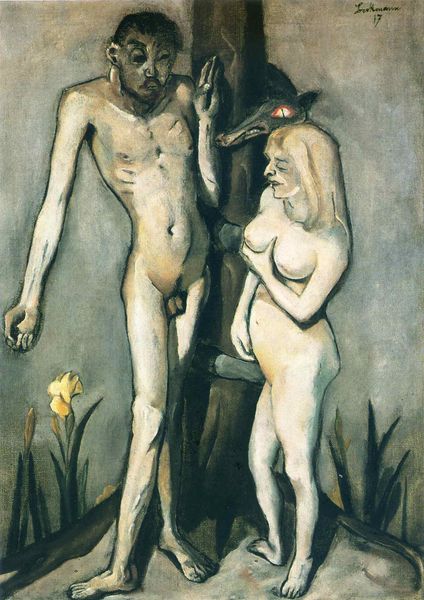
Dimensions: 90.5 x 117 cm
Copyright: Public domain
Editor: Here we have Paul Cézanne’s “The Abduction,” painted around 1867. It’s oil on canvas. The scene feels heavy, dramatic, and definitely unsettling, and the colors really amplify the sense of a struggle. How do you interpret this work? Curator: Looking at "The Abduction," I see a moment rife with the tensions of power and gender. Considering its place within history-painting, it raises many questions. Who is being abducted, and what narratives about victimhood and agency are at play here? Editor: So, it's more than just a depiction of a scene; you see it engaging with broader social narratives. What makes you say that? Curator: The very title "The Abduction" frames our understanding. Abduction implies a taking, a removal of agency. Cézanne’s work invites us to consider the male gaze, power dynamics, and the historical context within which these kinds of scenes were both consumed and, perhaps, romanticized. How do we read the figures in the landscape, and do they suggest possible resistance or complicity? Editor: It's interesting you point that out, as I was mainly seeing this in terms of the composition, especially how the dark palette creates such a strong contrast. It hadn’t occurred to me to read into these broader themes! Curator: Precisely! Considering Cézanne’s historical context, can we draw lines between these visual choices and wider discussions about gender and social disruption? Editor: That’s a totally different way to appreciate the artwork. I definitely learned to look at "The Abduction" not just as a painting, but also a kind of critical mirror. Curator: Indeed, the painting opens up rich dialogues between historical context and contemporary theory!
Comments
No comments
Be the first to comment and join the conversation on the ultimate creative platform.
